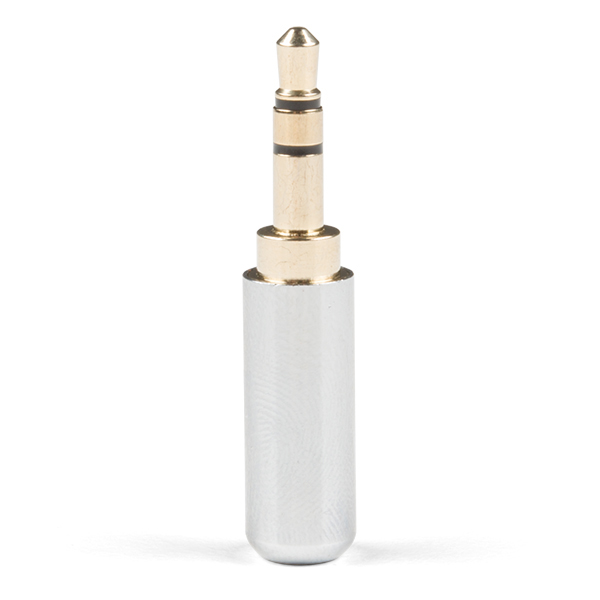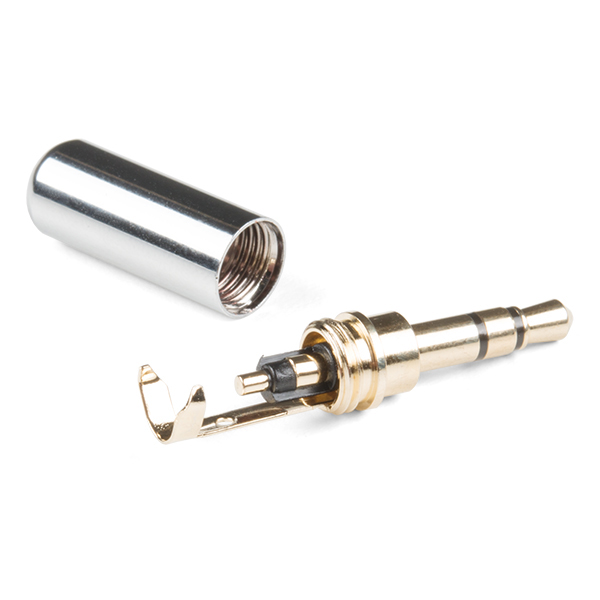TRS Audio Plug - 3.5mm (Metal)
TRS connectors are the audio-style connectors that you see on some phones, MP3 players and development boards. TRS stands for "Tip, Ring, Sleeve." If you're hacking on something that has a three-conductor audio jack, being able to plug straight in will keep your build clean and simple.
Note: This plug allows you to add a custom length of wire to your connector or repair a broken shroud on an existing cable you just cannot live without. Unfortunately, the supplier has not provided a datasheet or dimensional drawing please see the similar documents provided by other SparkFun products on the "documents" tab.
- Plug w/ solder-point connections
- Shroud to cover solder connections
TRS Audio Plug - 3.5mm (Metal) Product Help and Resources
Getting Started with the MyoWare® 2.0 Muscle Sensor Ecosystem
April 1, 2022
The MyoWare® 2.0 Muscle Sensor, an Arduino-compatible, all-in-one electromyography (EMG) sensor from Advancer Technologies. In this tutorial, we will go over the features and related shields to connect the sensor to a muscle group.
Connector Basics
January 18, 2013
Connectors are a major source of confusion for people just beginning electronics. The number of different options, terms, and names of connectors can make selecting one, or finding the one you need, daunting. This article will help you get a jump on the world of connectors.
Comments
Looking for answers to technical questions?
We welcome your comments and suggestions below. However, if you are looking for solutions to technical questions please see our Technical Assistance page.
Customer Reviews
4 out of 5
Based on 1 ratings:
Works great! 4.5 Stars. Rings are machined well and it makes great connection
Knocking off one star (should only be 1/2) for the lack of an integrated bend relief, but you can slip some heavy heat-shrink over your cable to get a little added protection where it exits.
It necks down right before the 3.5mm jack so it fit into phone cases well. It was actually easier to solder to than it looked. I just fanned the strands and tacked them directly onto the metal surfaces.
I didn't completely trust the outer shell not to unscrew over time, so I put a bunch of silicone glue inside. That should pot the solder joints a bit as well. If you don't have glue or sealant around, you can use nothing, or perhaps put some loctite on the threads.



